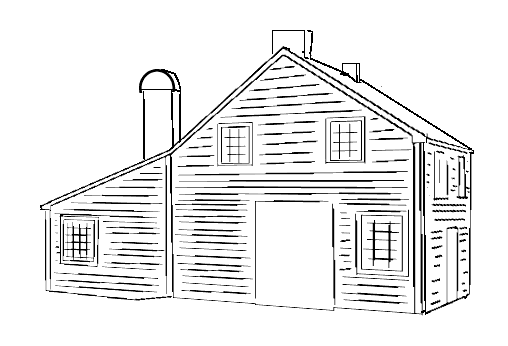
Aeneas Shaw, born in Scotland about 1740, came to New York as a young man and entered the army as an ensign. He distinguished himself as an able British soldier during the American Revolution and was promoted to Captain with the Queen’s Rangers. After the British surrender, Shaw’s property in Long Island was confiscated and he was had to leave. He led his contingent of Rangers on snowshoe through the dead of winter via New Brunswick to Montreal. For this feat, he earned the attention of John Graves Simcoe, who later praised Shaw as a man of “Education, Ability & Loyalty.” Shaw arrived in York in 1793, where his detachment cleared York and built the first garrison.

As a Loyalist, Shaw received thousands of acres including park lot 23, where he settled his family in 1794, naming it, Oak Hill, from the Gaelic Tordarroch, the name for his clan’s homelands. Shaw was appointed to the Legislative Council, where he was valued by Simcoe and Russell. Shaw’s decisiveness and energy earned him later appointments to the Executive Council and a number of other public offices. In 1803, Shaw retired on half pay with the rank of Lieutenant Colonel and the standing of honorary councillor. But, war with the States impending, he was made Major General and given the job of training the militia. It was Shaw who led the militia in an unsuccessful defence of the town in April 1813.
The Shaw land was heavily wooded, with pine, oak, hickory, and beech. His houses stood half a mile north of today’s Queen Street, just north of Garrison Creek, near present day Harrison and Crawford Streets. The first house was a small pioneer log dwelling, which remained until about 1875. In 1798, having seven sons and six daughters , he required a much roomier residence; so he built a larger frame home slightly east of the original home. It was the first frame residence in the York area. The area around Oak Hill was wilderness for many years; in 1806, there were still only three homes in the area. Captain Alexander Shaw, a grandson of Aeneas, was still living in the house in 1871, and the property remained largely intact until he began selling off portions in the 1870s. Today, a provincial historical plaque on Queen Street West at the entrance to Trinity Bellwoods Park, commemorates “Major-General The Honourable Aeneas Shaw”. Shaw Street, which marks the western lot line, provides a reminder of Aeneas Shaw’s Oak Hill. (For more about Oak Hill and Aeneas Shaw, see “The Estates of Old Toronto” by Liz Lundell).
